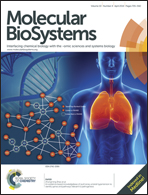A putative role of the Sup35p C-terminal domain in the cytoskeleton organization during yeast mitosis
Abstract
Sup35 protein (Sup35p), or eukaryotic peptide chain release factor GTP binding subunit (eRF3), is a well-known yeast prion responsible for the characteristic [PSI+] trait. N- and M-domains of this protein have been the foci of intensive research due to their importance for the prion formation. Sup35p C-terminal domain (Sup35pC) is essential for translation termination and cell viability. Deletion of Sup35pC was shown to lead to malformation of cells during mitosis. In this study we confirm that Sup35pC domain possesses high sequence and structural similarity to the eukaryotic translation elongation factor 1-α (eEF1A) from yeast and show that its sequence is conserved across different species including human. Because cell malformation during mitosis could be due to the deregulation of cytoskeleton formation, and since a Sup35 paralog eEF1A is known to act as an actin modulating protein, we focused on establishing of the relationships between the Sup35pC and modulation of the cytoskeleton formation. We found 104 co-partners between Sup35pC and EF1A of S. cerevisiae, and 18 partners of human ERF3A. Based on the analysis of known and modeled structures of some effectors and partners we found possible protein–protein interactions. Based on our study, we propose that Sup35pC may serve as actin modulator during mitosis.


 Please wait while we load your content...
Please wait while we load your content...